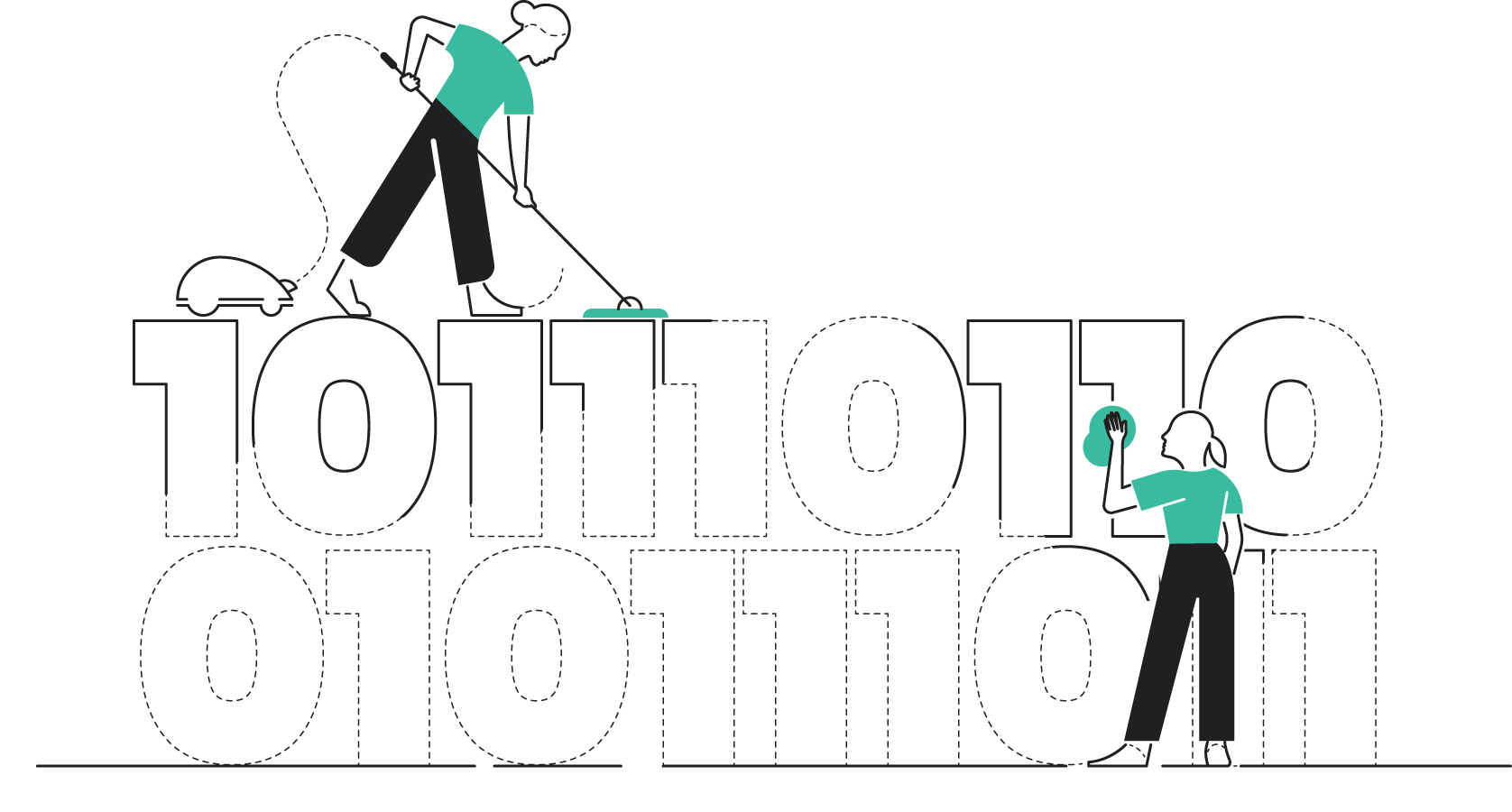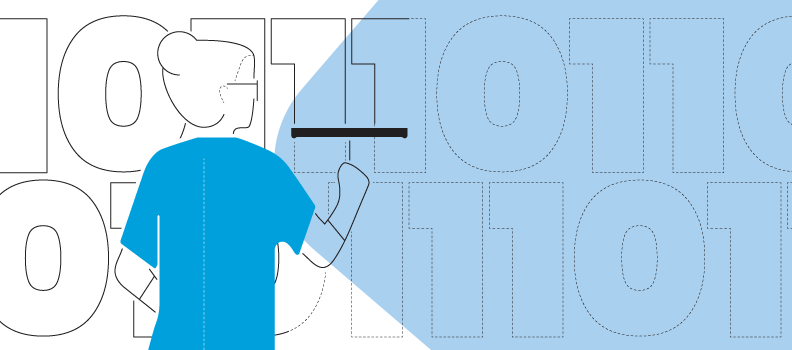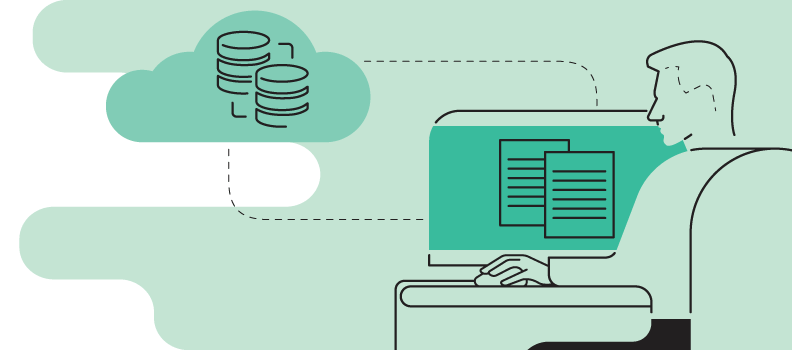Good data is critical to growing your business. Don’t believe us? Here are the facts:
The average financial impact of poor data quality on organizations is $9.7 million per year.
Additionally, in the U.S. alone, businesses lose $3.1 trillion annually due to poor data quality.
This is exactly why data hygiene best practices are so important. But what is data hygiene? How do you maintain it? And what are some data hygiene best practices your business can follow with future data you collect?
The data hygiene definition
Data hygiene or data enhancement is the process of cleaning your data. You use it to make sure that the information you have on file for customers—name, postal mailing address, email—is correct.
You might think—Of course it’s correct! My customer gave me the information him/herself.
However; out-of-date information is a common but often overlooked cost for businesses.
If a customer’s handwriting was difficult to decipher, you could have entered their information incorrectly.
Or perhaps someone got married and changed their name or moved to a new home.
People pass away.
People simply change their minds about wanting to hear from you.
And keeping that information on file for the sake of appearances or having a big list to brag about isn’t doing you any favors.
As a matter of fact, bad data and old contact information can cause big problems for your list.
For businesses that do any kind of marketing such as send postcards regarding an annual sale or email customers about upcoming events, data hygiene can improve efficiency as well as save money.
However, when ongoing database hygiene is not practiced, your data can slowly stop working for you. Your message may no longer reach your intended audience, which can cost you money or get you flagged as SPAM—something that can happen with both email and traditional mail!
Thankfully, today’s businesses have a few options for keeping their lists clean.
Enhancement services to maintain database hygiene

Merge/Purge & De-Duplication
Did you know? Sometimes users will sign up for your list several times. This could be due to an interest in multiple offers. Or, they could have forgotten that they previously gave you their information.
Checking your list for duplicates and deleting any that you find is a great way to practice database hygiene and potentially boost engagement.

Clean-up services
Correct common misspellings, add missing characters to the domain name and extension, and flag potentially bad emails containing foul language.

Suppression services
Submit your email list and we’ll return any records that match our Global Suppression File of undeliverable addresses. Two common types of suppression include:
Deceased suppression: There are roughly 3 million deaths in the United States every year so filtering these names and emails from your list can make room for improved campaign statistics.
Incarcerated Suppression: While total incarcerations have dropped steadily since 2019, there are still nearly 2 million incarcerated Americans. While they may eventually return to checking the email or living at the address you have on file for them, filtering their name is a better bet for your long-term ROI.
DIY enhancements to maintain database hygiene

Scrubbing to improve database hygiene
You don’t hear about this much, but it’s okay (and normal) for some people to lose interest in your product or service.
From changes in their day-to-day habits to no longer needing what you sell, there are dozens of reasons someone may no longer wish to receive your marketing.
We get it—there are few things that cause heartache for business owners like deleting people from your list. But that is exactly what will help you see an increase in engagement. This is where list scrubbing comes into play.
Scrubbing your customer list means you’re deleting or archiving contacts on your list that no longer act engaged.
For email lists, this may mean they’re no longer opening your emails. For mailing lists, this can mean they haven’t made a purchase from you in over a year.
The first time you scrub your list can be difficult. Businesses have been known to lose over half their email list in their first scrub. But scrubbing is key to maintain a healthy list, increasing overall engagement, and learning about your audience and how they evolve.
3 data hygiene best practices

Now that you better understand the ways you can practice database hygiene with your list, let’s cover three important best practices for moving forward. Because once you take the time to clean your list and it really starts working for you, you’ll want to maintain that.
1. Determine what data you want to collect
What are you hoping to gain from your data? What is its purpose? Many businesses don’t actually know the answer. Therefore, there is no rhyme or reason to the information they collect.
However, coming to understand what you want to do with prospect information can help you decide what you need to ask for.
Is most of your marketing taking place digitally? Collect email addresses.
Do you send out a beautiful, bi-annual catalog? Collect postal addresses.
Do you like to wish people a happy birthday? Ensure you collect the correct spelling of their name for any email or postcard you may send.
2. Standardize data entry
Do you have more than one person entering customer information into your system? Then you might notice some discrepancies in how that data is entered.
When you’re looking to maintain an accurate customer data file, it’s important to standardize your data entry process across departments. Mistakes may still happen now and again. But standardization will help you work toward meeting the characteristics of data quality discussed previously, which is important for businesses wanting to increase their revenue.
3. Perform regular data hygiene
Remember that data hygiene best practices alone can’t keep bad data from appearing in your customer files. There are many reasons why data may change over time, including:
- Birth
- Marriage or divorce
- Moving
- Opt-outs
- Bankruptcy filings or closings
- Deceased or incarcerated
Partnering with a big data company, like Salesgenie can help you maintain your lists with ongoing data hygiene services performed annually or bi-annually.
Whether you visited this blog for a data hygiene definition or you simply wondered, what is data hygiene? We hope you found all the answers you were looking for.
Need some initial steps for getting your data cleaned up?
Read: Clean Up Your Customer Data Files in 5 Steps
Don’t have time to maintain your lists in the way the deserve? Talk to a trusted partner at Salesgenie®. In addition to many of the data hygiene services listed above, we offer turnkey marketing solutions like direct mail, email services, and online advertising that will help you remain in contact with your customers.






